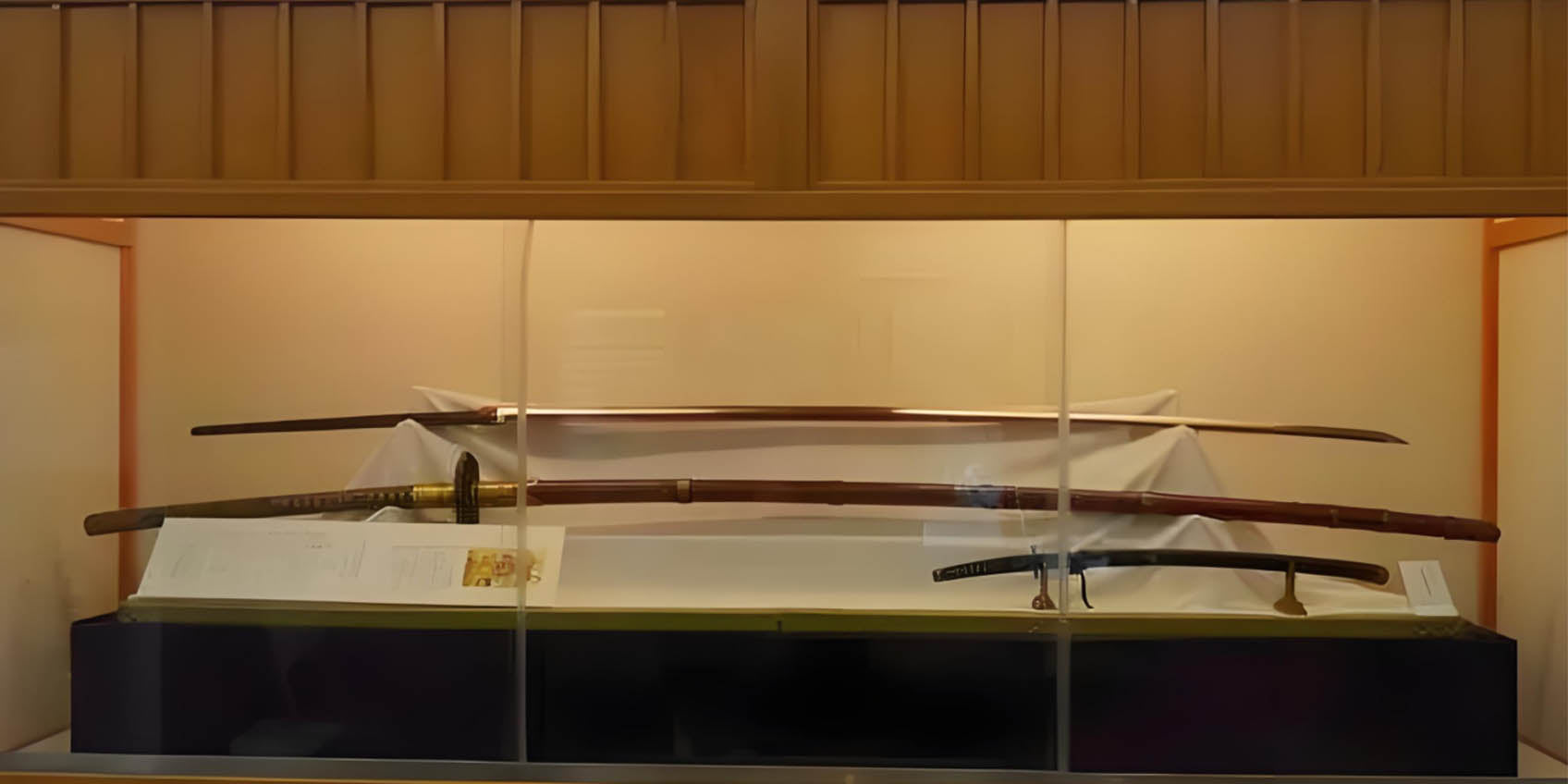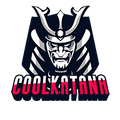The Origin and Characteristics of Odachi: A Symbol of Ancient Samurai

Real Authentic Katana: The Origin and Characteristics of Odachi
The Odachi, a profound symbol of ancient samurai valor and tradition, features an imposing katana blade meticulously forged from high-carbon steel and enhanced through differential hardening for a razor-sharp cutting edge. This Japanese sword not only embodies the unparalleled craftsmanship of Japanese swordsmiths but also reflects its dual role in combat and ceremonial significance, cementing its place as a true authentic katana in history and culture.
Odachi vs. Nodachi: Differences and Connections
In Japanese sword culture, Odachi and Nodachi are often confused, but they have distinct differences and connections regarding length, usage, and historical context. Although these two terms are sometimes used interchangeably, they traditionally have different definitions.
Differences in Length
Nodachi typically refers to swords with a blade length over 90 cm. In some literature and colloquial usage, Nodachi can occasionally be used as a synonym for Odachi, but its blade length usually ranges from 90 cm to 150 cm. The relatively shorter Nodachi is more suited for infantry combat, especially for sweeping and targeting the lower limbs of enemies on the battlefield.
Odachi, on the other hand, is much larger, referring to swords with a blade length over 150 cm. These giant swords were primarily used by cavalry on the battlefield, delivering powerful slashes thanks to their extra-long blades, making them particularly effective during mounted charges. Due to its size, the Odachi is often impractical for individual combat and is more commonly used in rituals or as a symbol of a samurai's status.
Differences in Usage
The main difference between Nodachi and Odachi also lies in their battlefield applications. The Nodachi, being relatively shorter, is commonly used in ground combat by infantry, with a straighter blade suitable for sweeping and quick cuts. It is more flexible in offense and defense, especially useful for severing enemy horse legs or attacking foot soldiers.
Odachi, however, is better suited for cavalry combat. Its exceptionally long blade generates significant destructive force during high-speed charges, particularly utilizing the combination of the blade and gravity for powerful vertical strikes. Nevertheless, due to its bulk and impracticality for close combat, the Odachi was gradually replaced by more suitable weapons during the late Sengoku period.
Historical Background and Cultural Significance
While both weapons were historically used in battle, their cultural symbolism differs. The Odachi is not only a weapon but also a representation of strength and status among the samurai class. During the Kamakura and Muromachi periods, owning a formidable Odachi was a status symbol, especially those over 150 cm in length, often appearing as ritual or offering tools in shrines.
Conversely, the Nodachi focuses more on practical function as an effective weapon for ancient soldiers to inflict damage on enemies. Compared to the Odachi, its moderate length allows for greater versatility on the battlefield, making it particularly suitable for infantry use.
Commonalities and Connections
Despite differences in length and usage, Odachi and Nodachi share certain commonalities. Both played crucial roles on ancient Japanese battlefields, especially against cavalry and infantry, where their extra-long blades provided significant tactical advantages.
Additionally, the definitions of these weapons may overlap across different regions and historical periods in Japan, where standards for categorizing swords are not always consistent. The Odachi is sometimes viewed as an extreme length of Nodachi, and they frequently appear together in historical documents.
Overall, the Odachi leans more toward symbolism and ritual, while the Nodachi showcased more practical combat value on ancient Japanese battlefields. Both reflect the richness and diversity of Japanese sword culture.
The Historical Background of Odachi
The popularity of the Odachi began during the Kamakura period, when the samurai class held real power, and swords were not only used in combat but also became tools for displaying the warrior’s might and status. Samurai took pride in possessing graceful power and exquisite weaponry, and the Odachi frequently appeared on the battlefield with its elongated blade. As samurai culture evolved, the Odachi occupied an important position in the weaponry inventory and became a symbol of identity.
Especially during the Sengoku period, Odachi emerged with lengths of five shaku or longer, some even exceeding nine shaku (approximately 270 cm). These colossal swords were primarily used to strike at enemy horse legs or to sever foot soldiers rather than the imagined use of cleaving enemies and horses in half.
The Structure and Craftsmanship of Odachi
Odachi boasts a blade length of over 5 shaku, typically used while mounted to harness the momentum of the horse for powerful strikes. Unlike standard samurai swords, the length and weight of the Odachi make it unsuitable for individual carrying, being used more as a cavalry weapon. Due to the length of the blade, some Odachi were not subjected to heat treatment to prevent damage from striking the ground.
Moreover, many Odachi are designed with a noticeable curve, enhancing the cutting effect while meeting the Japanese warrior's dual pursuit of aesthetics and functionality. One of the best-preserved Odachi, measuring 7 shaku 4 sun 2 bu (approximately 225 cm), is housed at Yahiko Shrine in Niigata Prefecture, recognized as a national treasure.
The Martial Legacy of Odachi
Although Odachi played a crucial role on ancient battlefields, modern martial arts have relatively few schools that focus on its use. Existing schools emphasizing Odachi include Rinzai Myōgyō-ryū's Odachi Kenjutsu, Keiryū (Inryū)'s Nodachi techniques, and Kōden Enshin-ryū's Odachi techniques, all of which concentrate on practical techniques for the Odachi, preserving the essence of ancient battlefield combat.
It's worth noting that the famous Niten Ichi-ryū, founded by swordsmanship master Miyamoto Musashi, does not include Odachi techniques. Compared to the dual sword styles that prioritize agility, Odachi focuses more on the combination of power and technique.
The Cultural Influence of Odachi
In the late Sengoku period, as practical weapons like tachi emerged, the Odachi gradually withdrew from battle, becoming ritual objects enshrined in shrines. People began to use shorter, more portable tachi as the mainstream combat weapon, while the Odachi transformed into a cultural heritage symbolizing the samurai spirit.
Descriptions of the Odachi in literature such as Taiheiki further deepen the mystique surrounding this long sword. In Japan's sword culture, the Odachi represents not only the power and courage of the samurai but also the glorious epochs of ancient battlefields.
Conclusion
As a weapon with historical significance and cultural value, the Odachi, despite its rarity in modern martial arts, carries the glory and craftsmanship of ancient Japanese samurai. Its unique structure and characteristics place it in a significant position in the history of swords. Whether as a collector's item or an essential element in the study of Japanese sword culture, the Odachi holds undeniable influence.
Hand Forged 55-inch Nodachi Japanese Samurai Long Sword Combined Material 1095 Steel + Folded Steel Iron Tsuba
The COOLKATANA Nodachi is crafted from 1095 folded steel, featuring a full tang structure and treated through clay tempering to ensure a tough and sharp blade. This is not merely a battle-ready sword; it is designed for real combat use rather than being just a collector's item.
The crafting process adheres to traditional techniques, with each sword hand-forged and hand-polished to achieve the highest craftsmanship. Additionally, the blade design offers perfect balance and a comfortable grip, providing an excellent user experience for the sword wielder.
This Black Friday, don’t miss the chance to own the Hand-Forged 55-inch Nodachi Japanese Samurai Long Sword, crafted from a combination of 1095 steel and folded steel for exceptional durability and strength. This impressive long sword features a robust iron tsuba, adding both elegance and protection, making it the perfect choice for collectors and practitioners alike.
The Nodachi's 55-inch blade showcases the power and precision of traditional forged swords craftsmanship, with a long reach and sharp edged blade designed for battle. The combination of 1095 steel and folded steel ensures a balance of flexibility and hardness, making it ideal for both sword practice and display. Whether you’re comparing scabbard vs sheath, appreciating the intricate katana tsuba, or studying the finely crafted parts of the sword, this Nodachi is built for performance and beauty.
For fans of samurai weapons and the history of swords, this Nodachi embodies the spirit of the weapons of the samurai. Its length and craftsmanship make it stand out as both a functional sword and a piece of art. Whether displayed in your collection or used for sword practice, this Nodachi is a true testament to Japanese sword-making.
Take advantage of Black Friday specials and add this Hand-Forged Nodachi to your collection. Whether you're seeking a powerful weapon or a beautiful sword display piece, this long sword is a perfect blend of traditional design and modern functionality.





